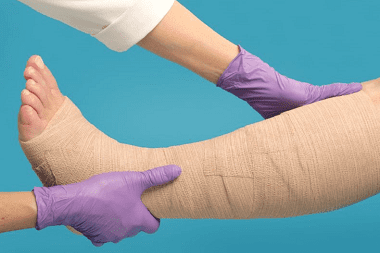Medicine questions >>>> Lymphostasis - causes and treatment options
Lymphostasis - causes and treatment options.

Disruption of lymph flow from the periphery to the lymphatic collectors and the thoracic lymphatic duct is called "lymphostasis".
A typical sign of lymphostasis is edema in the limb area, which is the result of an excess amount of tissue fluid excreted by the body from organs and tissues, but due to the prevention of its return to the venous bed as a result of venous insufficiency, malformations of the lymphatic system, removal of regional lymph nodes as a result of metastasis, damage to the lymphatic vessels, the presence of tumors or inflammation, disorders in the urinary system (renal failure), heart failure, infectious diseases, etc. When you press on the area of edema, traces of pressing remain.
Lymphostasis as an independent disease develops with abnormalities in the development of the lymphatic system (peripheral vessels, highways). Symptoms of this form of lymphostasis can increase already in childhood and, as a rule, one or both limbs are affected. Lymphostasis, as a complication of other diseases, is not associated with anomalies of the lymphatic system and manifests itself as edema of one of the limbs, usually its lower part.
Lymphostasis occurs in three stages:
- Transient edema - develops in the evening (after physical exertion, a long stay in an upright position) and subsides in the morning without outside interference;
- Irreversible edema - does not disappear on its own, is accompanied by growths of connective tissue, more dense in consistency, the skin is stretched on its surface;
- Severe course (elephantiasis) is associated with irreversible impairment of lymph outflow and fibrocystic changes in tissues. The limb acquires formlessness and movements in it are difficult, muscle contractures, deformations of articular structures, erysipelas, trophic ulcers appear.
In the treatment of lymphostasis, an early visit to a doctor and conservative therapy are important: lymphatic drainage massage, wearing compression hosiery, hardware compression, the use of drugs - phlebotonics. It is recommended to use light-salted food in the diet, not to abuse drinks, to regulate the flow of fluid into the body. For a limb prone to edema, more careful and careful care is required so as not to damage the skin and not infect. At the stages of the complex course of the disease, surgical intervention is performed in order to redirect the flow of lymph into healthy lines and tissues. Lymphovenous anastomoses are created with the aim of lymphatic drainage into nearby veins.

Read

Read



























